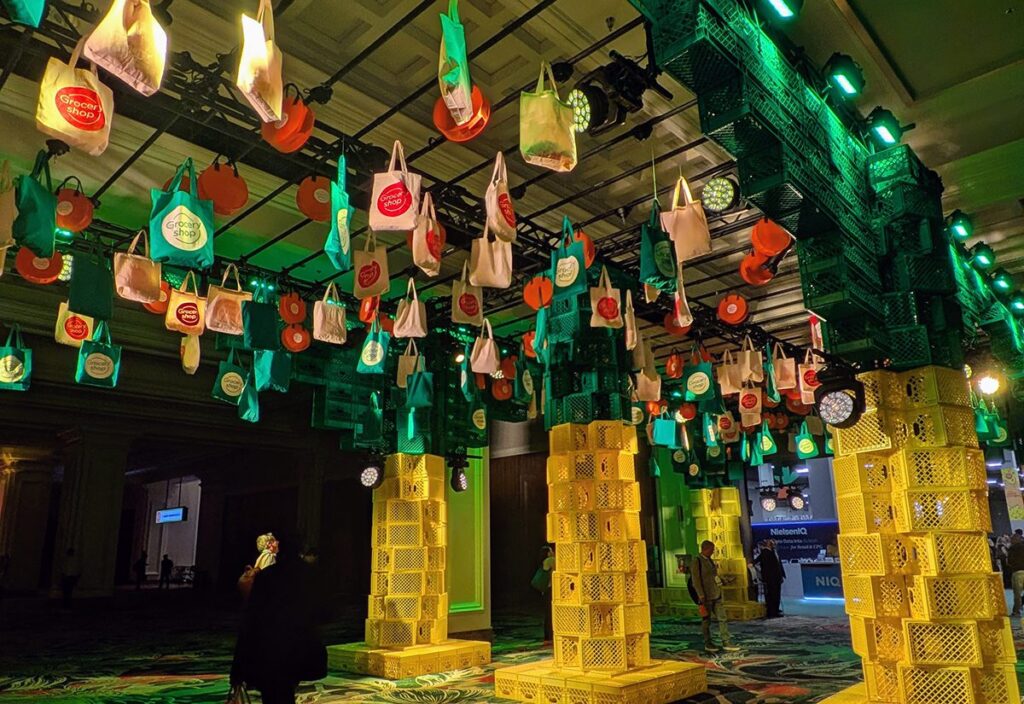 I was back and forth across the country twice in the past week, which meant, among other things, a lot of time to think. Of course it also meant a couple of over aggressive Manhattan cab drivers, a lousy hotel wireless signal, $20 eggs, an endless wait to eat noodles in the East Village, long security lines, a very grumpy flight attendant, two lost power cords, twice subjected to Cheaper by the Dozen 2 as the in flight ‘entertainment’ and sitting next to a guy on a plane I swear was the Video Professor. You have to love business travel.
I was back and forth across the country twice in the past week, which meant, among other things, a lot of time to think. Of course it also meant a couple of over aggressive Manhattan cab drivers, a lousy hotel wireless signal, $20 eggs, an endless wait to eat noodles in the East Village, long security lines, a very grumpy flight attendant, two lost power cords, twice subjected to Cheaper by the Dozen 2 as the in flight ‘entertainment’ and sitting next to a guy on a plane I swear was the Video Professor. You have to love business travel.
Anyway, on my way back from Chicago last night, I was drifting out of consciousness but hovering above sleep, thinking about, of all things, retail sales channels. Now I’m not sure what that says about me, (nor do I really want to know) other than the fact that I live my work. But truth be told, I’ve always done my best thinking half awake, which was not an easy sell to some of my teachers growing up.
As we bounced our way across the Rockies, I was thinking about retailers, and wondering why the retail channel continues to be so static for so many major brands. Over the past few years there have been some “A list” brands that have begun to effectively engage the consumer at the retail level. But only a few. Apple is clearly an innovator in this field, and the first brand that comes to mind when I think of a great retail experience. Compare the “big box” stores to Apple. It’s like cold and dreary Candlestick Park (make that 3Com Park, no scratch that, its Monster Park, as in Monster Cable, not Monster.com) versus downtown San Francisco’s quaint and charming Pac Bell Park. (I mean SBC Park, no wait, I mean AT&T Park). There is just no comparison.
There are a myriad of factors as to why, but the elephant in the room is that the big box retailers have endless amounts of brands that they should be leveraging to create a more effective in-store experience. Apple only has Apple, which can be seen as an advantage or a disadvantage depending on which side of the aisle that you sit on. Big box retailers can either see the amount of brands they have as an attribute or a headache. Guess what? It’s time to take an aspirin and get to work. Too much money is being lost because big box retailers are 2006’s version of the “dead zone”.
Lets start with two simple hypotheses:
- Executing an effective experiential strategy at the closest point to purchase makes perfect sense.
- Retail venues provide “the” perfect platform for experiential methodologies to be activated.
Now lets take a look at the EX scale put together by author and fellow IXMA board member Bernd Schmitt. To summarize, the EX scale correlates customer experience with customer behavior. The last column of the scale indicates that TV ads create a 59% purchase intent, websites create a 76% intent to purchase and in-store creates an astounding 86% purchase intent.
There are several very obvious reasons as to why the scale tips the way it does. But one often-overlooked aspect is the consumers’ control and/or ability to customize the medium in which they shop. Sitting in a Lazy Boy recliner watching a commercial is not likely to cause anyone to throw on the slippers and head to Target. TV is a medium that disables freedom of choice for the consumer. On-line, a consumer can, to a certain extent, define and control his own experience. I would call this a semi-empowered consumer. One can determine where he wants to go on the website and choose which colors and styles to view.
As I have said, television commercials can be very experiential. Yet even the best experiential commercial has a fraction of the impact on purchase intent when compared to the actual retail store’s environment. At the store, consumers can browse, try on what they like, spend as much time as they need, and eventually make their way to the register. With television, marketers have very little control over the context in which consumers see their ads. You’re sitting at home, your kids are fighting, your husband is on the phone, your dog is barking at a squirrel in the back yard, all while Procter & Gamble is trying to sell you Tide. However, at the retail store, marketers have a vast amount of control of the context in which people shop. They can control the sensory experience, and until people can hook up their state-of-the-art fragrance transmitters and holographic, virtual rooms to their PCs, (and this is coming folks, so just you wait and see) the in-store experience will always be the most important sales channel.
I look at the retail platform and see endless amounts of opportunity. Most POS structures are just that. Retailers seem to have a huge blind spot for the most important factor in consumer purchase intent.
But things are changing. Take a recent display created by Adidas. When a shopper removes a soccer ball from the station, the unit emits a small scent of leather and fresh cut grass. If a shopper takes off a soccer shoe, then the unit’s TV screen begins to show goals that were scored while wearing that particular shoe. The list goes on, but take my word for it – it was simply awesome.
In the near term I hope to see better utilization of the retail platform. If you have any great examples please send them my way so that I may feature them.
Erik Hauser is creative director/founder of San Francisco-based marketing firm Swivel Media and founder of IXMA, the International Experiential Marketing Association. He also moderates the Experiential Marketing Forum and pens the biweekly BrandAnimation column for CHIEF MARKETER.



